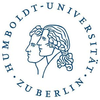
Overview
Established in 1809, the Humboldt-Universität zu Berlin (Humboldt University of Berlin) is a non-profit public higher education institution located in the urban setting of the metropolis of Berlin (population range of 1,000,000-5,000,000 inhabitants). Officially recognized by the Senatsverwaltung für Wissenschaft, Gesundheit, Pflege und Gleichstellung, Berlin (Senate Department for Science, Health, Nursing and Gender Equality of Berlin), Humboldt-Universität zu Berlin (HU Berlin) is a very large sized (uniRank enrollment range: 30,000-34,999 students) coeducational German higher education institution. Humboldt-Universität zu Berlin (HU Berlin) offers courses and programs leading to officially recognized higher education degrees such as bachelor's degrees, master's degrees and doctorate degrees in several areas of study. See the uniRank degree levels and areas of study table below for further details. This 215-year-old German higher-education institution has a selective admission policy based on students' past academic records and grades. International applicants are eligible to apply for enrollment. HU Berlin also provides several academic and non-academic facilities and services to students including a library, housing, sports facilities, financial aids and/or scholarships, study abroad and exchange programs, online courses and distance learning opportunities, as well as administrative services.
University Snapshot
Control
![]() public
public
Entity
![]() non-profit
non-profit
Size
![]() very large sized
very large sized
Selectivity
![]() not reported
not reported
University Identity
| Name (English) | Humboldt University of Berlin |
|---|---|
| Name | Humboldt-Universität zu Berlin |
| Name (Non Latin) | |
| Acronym | HU Berlin |
| Founded | 1809 |
| Motto | Universitas litterarum The Entity of Sciences |
| Colours | Blue and white |
| Mascot | |
| Screenshot |  |
| Video Presentation |
University Location
| Address | Unter den Linden 6 Berlin 10099 Berlin Germany |
|---|---|
| Location Map and Satellite View | |
| (30) 2093 0 | |
| (30) 2093 2770 | |
| Other locations |





Social Media
Introduction
Social media can be a powerful tool for Universities to communicate with current students, alumni, faculty, staff and the wider community. But how can social media be important for prospective students? Read our article about the importance of Social Media for universities and prospective students to learn more.
Social Media
uniRank publishes brief reviews, rankings and metrics for some of Humboldt University of Berlin's social media channels as a starting point for comparison and as an additional selection tool for potential applicants.
Humboldt-Universität zu Berlin's Facebook page review
Humboldt-Universität zu Berlin's X page review
Humboldt-Universität zu Berlin's Youtube page review
Humboldt-Universität zu Berlin's Instagram page review
Humboldt-Universität zu Berlin's official LinkedIn profile
n.a.